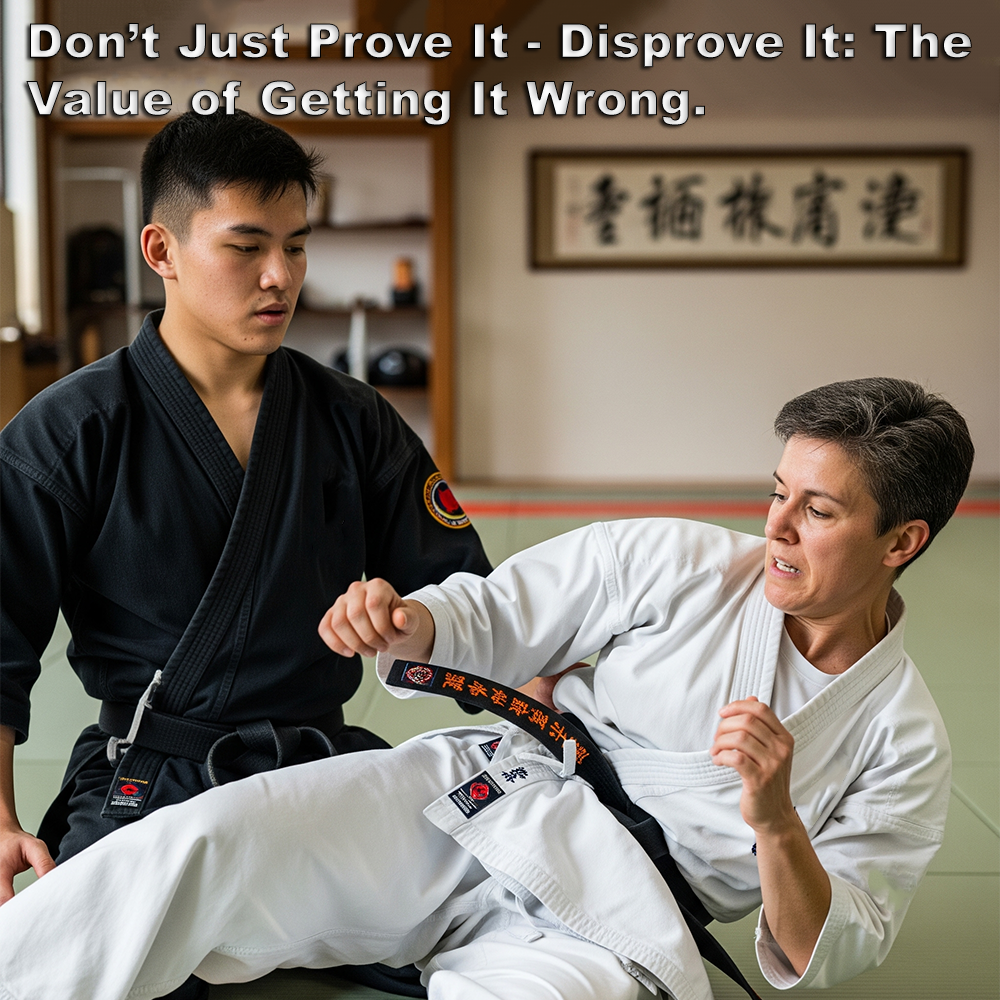
Don’t Just Prove It – Disprove It: The Value of Getting It Wrong.
Posted by ADAM CARTER on JUN 19, 2025

Don’t Just Prove It – Disprove It: The Value of Getting It Wrong.
(Approx 1 minute 40 second read)
When you are in the dojo watching your instructor demonstrate a technique, is that technique always successful?
It usually is, isn’t it? But why could that be a problem?
Because if you ever have to use those techniques in the real world, they will often fail – more often than you think. And students need to understand this, and train for it.
For the instructors demonstration to succeed most of the time, it’s largely because you have predetermined knowledge of the attack.
Usually, the attack is a ‘karate-style attack’ – unresisting and compliant – designed to ensure the demonstration succeeds.
But any real-life attack is going to be unpredictable, chaotic, vicious, and brutal… and never a ‘karate-style attack’.
So you must take failure into account.
We learn valuable lessons when we experience failure and setbacks. One of my students recently was practicing a drill and literally froze because he had forgotten what to do. I told him, “Do anything – and see what happens.”
After a few seconds, he reset himself and tried something different. It surprised his partner, who wasn’t expecting that response. That moment showed him something important: when things go wrong, you can still recover – and sometimes even gain the advantage.
Most of us don’t actively seek failure, but deliberately making mistakes can give us the knowledge we need to more easily overcome obstacles if things do go wrong.
We learn from our mistakes – well, hopefully we do.
Unless you’ve actually reset from a failed attack and retaken the initiative, you cannot know accurately what those measures entail. You should try to familiarize yourself with the wayward results of an attack and defense gone wrong. Try to recover and attempt something different – without having to think how, just like my student did.
It’s about being adaptable, flexible. Take a step back and think about what you’re doing. Don’t just try to prove something works – try to disprove it too. Challenge what you think you know.
How you interpret and apply information is what matters. Sometimes you have to step out of the mould. Apply logic and common sense. Look at things from a different perspective. Prepare and train for failure.
Try something a different way – because believe me, just when you think things are going well, someone steps in and throws the proverbial spanner in the works.
Then what?
Written by Adam Carter
